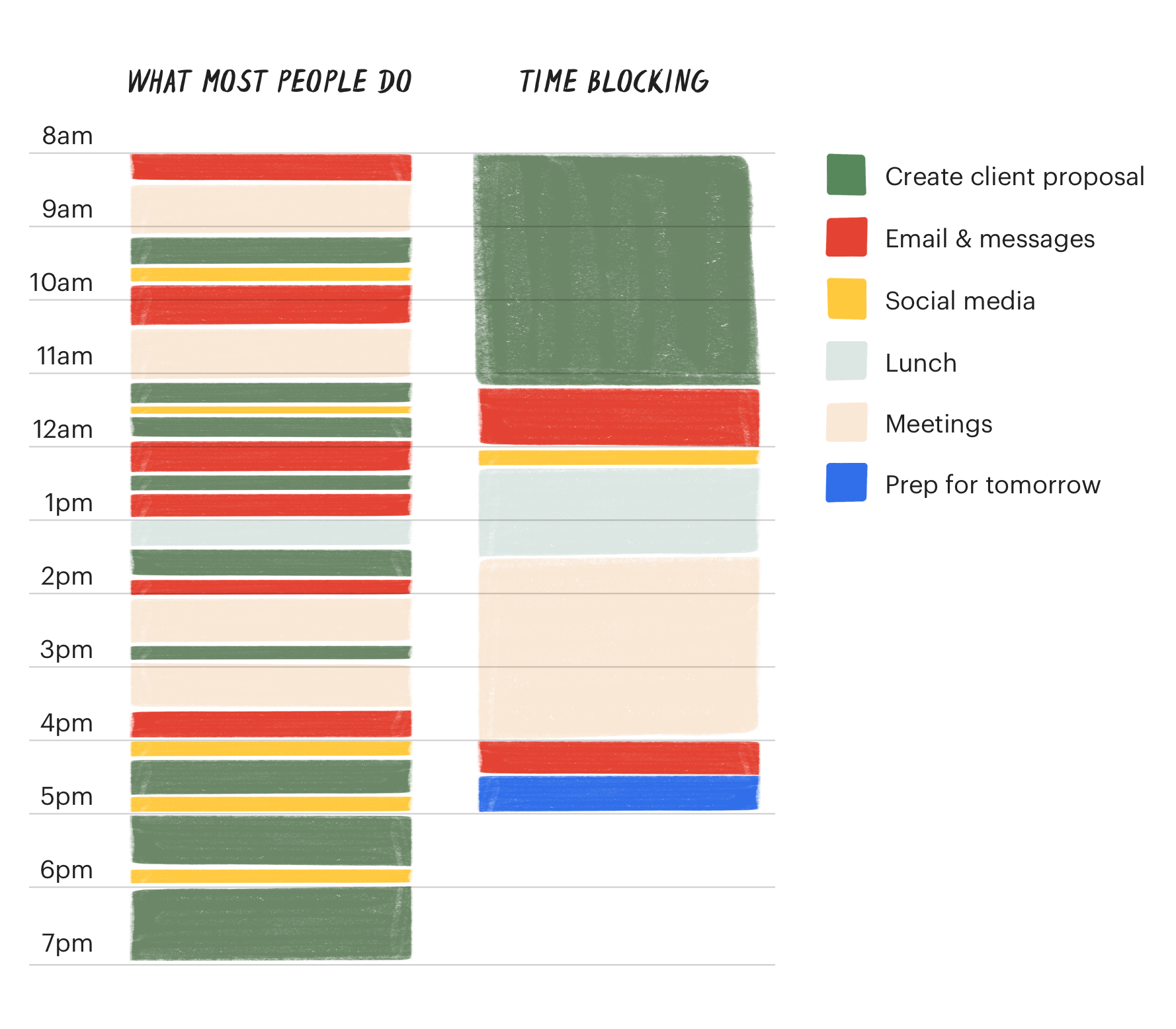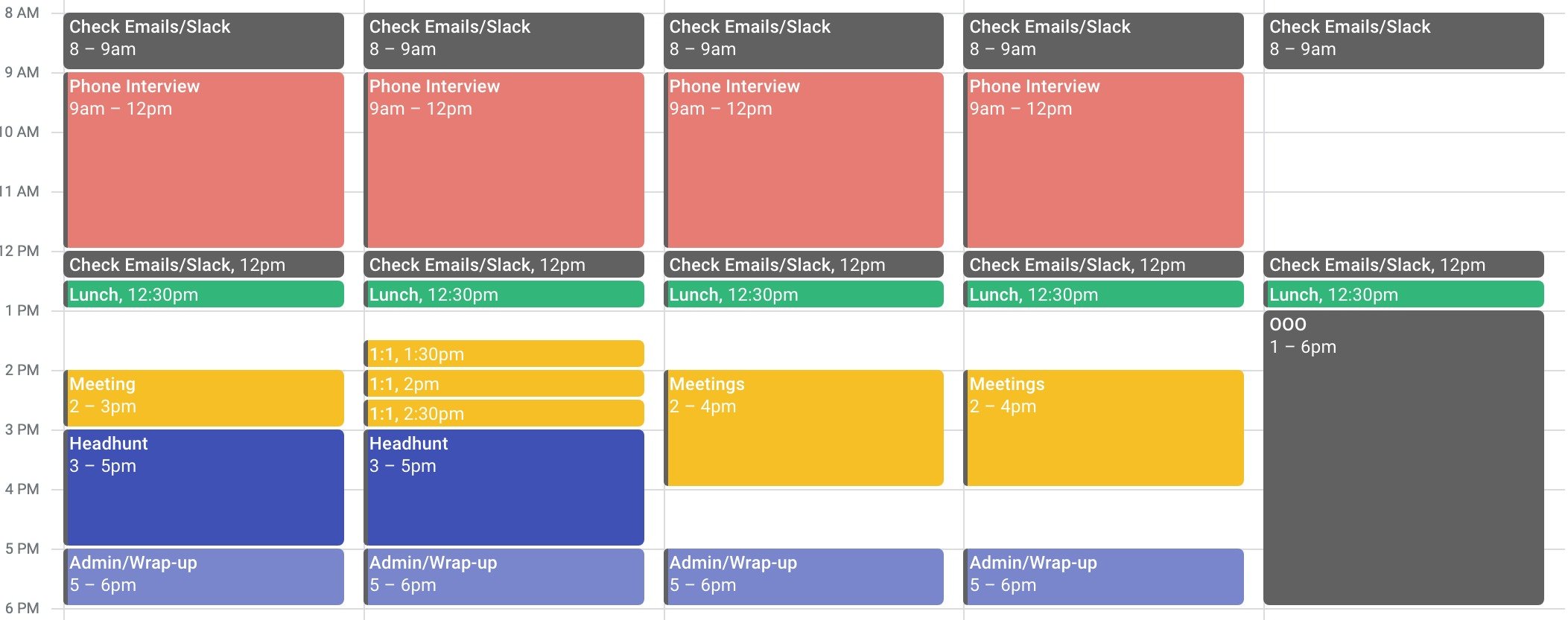My Adventures with Calendar Management
The schedules of ultra famous celebrities and hyper successful executives has long been a topic of deep fascination. Just take a look at LinkedIn, and I can guarantee that you’ll find at least one person talking about how Tim Apple, er, Tim Cook, wakes up at 3:45am every day to read user comments, or how Kris Jenner has her coffee, checks her email, goes to the gym, catches up on the news, and showers all before 7am.
It’s easy to think to yourself, if they can do it, so can I! After all, don’t we all have the same 24 hours? Hint, the answer is no. The reality is that for Tim Cook and Kris Jenner, they are in a wildly different position than you or I. For them, having such a tight schedule sort of imposes a protective barrier of sorts, ensuring that their time isn’t being misused, and that any problems or key decisions that require their attention are being solved and made on time.
For us normies however, having such a tight schedule might seem like a great idea, but it can often backfire. And speaking from experience, I can say that for me personally, that’s been the case.
Think of it this way. Most common office tasks have a fairly well-decided upon solution. If I ask you to write a document, you’ll likely choose either Microsoft Word or Google Docs. For a presentation, that’s PowerPoint or Slides (and if you’re chaotic-evil, Keynote). The same, however, absolutely does not apply to time management systems, and in particular calendars or to-do lists. There is just no one single way that anyone manages their time or tasks. I mean, you’ve got your Trello, Todoist, Google Tasks, Microsoft To Do, Remember the Milk, things, Any.do, OmniFocus, Evernote Tasks, Clear, Apple Reminders, and the list goes on and on and on.
Being someone that spends many of my waking hours thinking of how I can eke out a few more moments of productivity from my day, I’ve certainly spent my fair share of time exploring and experimenting with different systems and tools. The one consistent takeaway that I’ve noticed in all of those experiments is I’ve noticed that when I focus on an individual specific task, it’s all I can think about. Turns out, there’s a name for this - the Zeigarnik effect, which is when if a task sits in our heads for too long, it’s all we can focus on until it’s out of our heads. This is where all of those aforementioned digital solutions become so massively effective; they help us quickly dump tasks, thoughts, and ideas out of our heads and into a single place that we can manage. While doing so can relieve that itchy stress, simply writing things down without an actual plan to tackle them can quickly snowball, and before you know it, you’ve got a to-do list with weeks and months worth of postponed tasks.
“Writing things down can sometimes feel like half the battle, but it’s really just the starting point.”
This is where the idea of block scheduling comes into play. It’s a variant of the time-tested system known as the Pomodoro Method, where days are split into 20-minute sprints with 5 minute breaks between tasks. My main gripe with the Pomodoro method is that those 20-minute slices can sometimes create the perception of time scarcity, and generate the feeling that we’re just rushing from one thing to the next when those precious 20 minutes are up. Block schedules, on the other hand, are more generalized and larger chunks of time. It promotes time to longer, deep focused work sessions, while setting less important items for later. The way I look at it is to group similar items together, and tackle them within a given chunk of time.
When I first started working, my calendar was utter chaos. I was constantly jumping from one type of tasks to something completely different almost every 30 minutes. Rather than ending the day with a sense of accomplishment, I started to feel like a slave to my calendar, like I was constantly playing catch up and not having the time I needed to get things done. As I learned more about block scheduling, I started to go through my calendar and week by week iterate; slowly batching my time and tasks together into larger, more focused chunks. The problem was that while I was certainly more productive than before, I was still adhering to a strict sense of time with my calendar. This meant that as soon as it came time to work on the next block in my calendar, I’d often lose the flow and momentum I had built for what I was currently working on, leaving it mostly unfinished until that same block repeated next.
That’s when I came across the idea of Chronos and Kairos, or the principles behind how we manage and measure our days and lives. Chronos refers to chronological, or quantitative time. Kairos, on the other hand, refers to the perfect time to do something. I realized that I was inadvertently following a Chronos-like approach, and in doing so, was missing opportunities to finish a task because I was so ultra-focused on adhering to my own schedule as opposed to the quality of my output.
After shifting towards a Kairos approach, I began to understand the importance of flexibility within my own calendar. I went back through it, and adjusted my block schedule system to allow for areas, or spaces through the day that are completely unaccounted for. That way, if I finished something early, I could shift up my next block and start on that. Or if I needed more time to work on something, I have that readily available without losing my momentum to the curse of context switching.
A very rough recreation of what a typical work week looks like for me these days.
Ultimately, I’ve found that block scheduling works the best for me and the way my brain processes information. But it might not work for you, and that’s okay. Find a system that does, and continue to iterate until you feel comfortable. It’s a slow process that requires plenty of trial and error, but if you’re like me and find this fascinating, then it’ll be fun.


